Entertainment audiences and audience research
Applying marketing and communication principles to the entertainment industry
Industry applications
Entertainment version of four p’s
Leisure as Big Business
Entertainment Experience
Theoretical Principles
Technology Shifts the Industry
Internet influence
Promotion and the Internet
Convergence
Media, entertainment, and stars converge to promote in:
Psychology of Motivation
Products, experiences
Applying Maslow’s Hierarchy from an Entertainment Marketing Perspective
4Ps of Marketing Adapted for Entertainment
Experience as Product, price, place, promotion
People the missing p
Lieberman’s C Mix
Positioning Strategies
Promotion stategies
Brand and Line Extensions
Sayre’s 3Ts
Promotional Communications
Changing demographics
11th largest industry profits in 2006
Annual revenues of over $100 billion
Triad—amusement, entertainment, recreation leisure activities
Entertainment content—live performances (theatre, musical concerts), interactive experiences (recreation, amusement parks, travel, gaming) and media (movies, TV)
Entertainment marketing simply consists of the techniques and strategies developed to sell tickets to (or otherwise elicit payment for) activities that amuse and involve us.
Changing demographics:
Three broad demo shifts : 1) the emergence of a technologically savvy teenage audience. 2) an increase in the entertainment demands of 18-34 year olds. 3) and a continuation of spending on leisure among baby boomers (35-64). Aggregate spending on entertainment is concentrated in the middle-age groups, whose income is peaking at the same time leisure may be relatively scarce.
Triad: amusement, entertainment, recreation leisure activities
Amusement : it consists of diversions such as games and the satisfaction derived from playing them. This chapter presents an overview of games and gambling because they play an important role in generating revenues around the world.
Entertainment refers to live and mediated performance experiences such as a concert, dance, or drama, including the pleasure received from viewing comedy or magic
Recreation consists of activities or experiences carried on within leisure tie, either for personal satisfaction or creative enrichment. The recreation industry developed as recreation activities for adults expanded and because more and more people seek a break from a cycle of boredom and fatigue.
2. Theoretical Principles
Perishability- u can’t keep it, store it, you can have movie with DVD, but you can’t have the experience, you can’t keep the experience. Price overcome issues of perishability
Intangibility (souvenirs) – we are not selling product which can be touched, but the feeling, experience - we buy souvenirs of experience-based entertainment, but we cannot take home the experience itself. It is in our memory, not in our shopping bag.
Temporality (WOM) – at that time, at the cinema, go to the theme park,
Sociability (with friends)- most people go to cinema, if you didn’t watch the masterchef, but everybody at your work (next day) talk about it, you are not thinking that you are involved in them. Every day in your life is full of the entertainment. You start your day with a workout at the gym, you catch a glimpse of the morning newspaper, we play CDs on the way to work, we listen to a radio talk show on the way home, we use email to contact friends etc.
Time is attention: Demand for leisure is affected in a complicated way by the cost of time to both produce and consume entertainment products. E.g. reading a book uses more time per dollar of goods than frequenting a nightclub. Like money, attention has instrumental value because it can get you other things that you might want. It also has terminal value because many people want it for its own sake. Pleasure providers must capture the attention of audiences and entertainment consumers in order to get them to the venue, destination, or box office.
3. Entertainment Experiences
Passive—absorbing only (Passive: movie, television, novels)
Educational—active engagement in problem solving (Twitter, engaging audience Q&A)
Escapist—immersion providing a respite from real life and work (parks, games)
Esthetic—immersion in cultural experiences (art, nature)
Passive entertainment occurs when people simply absorb an experience through their senses without much participation; this occurs when viewing a performance, listening to music, or reading.
Educational entertainment requires the active engagement of the person’s mind, the type of involvement that occurs with problem solving. By creating experiences that straddle the realms of education and entertainment, guests absorb the events unfolding before them while actively participating in them.
Escapist entertainment experiences involve much greater immersion than other types of entertainment or educational experiences. It is intended to provide a respite from real life in venues such as theme parks, casinos, and virtual reality games.
In esthetic entertainment, audiences immerse themselves in a cultural experience with a visual component of the moment, such as standing at the rim of the Grand Canyon, visiting an art gallery or museum, or sitting in a Parisian café observing passers-by.




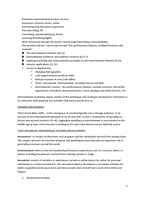
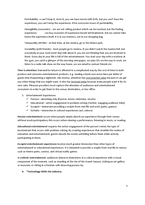
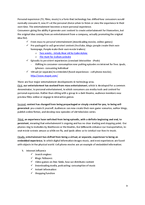
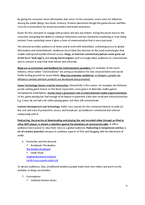
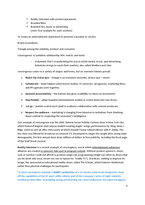
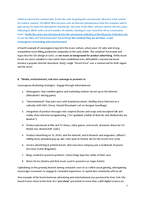
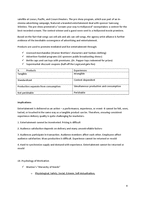

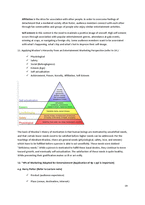
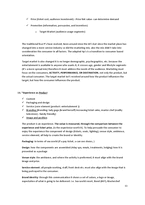
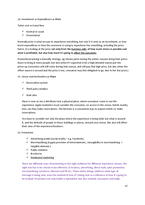
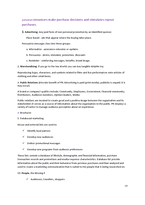
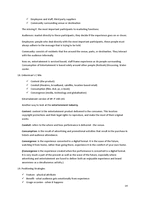
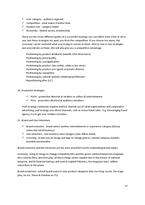
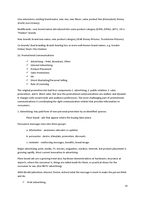

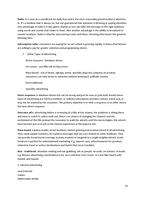


 분야
분야


